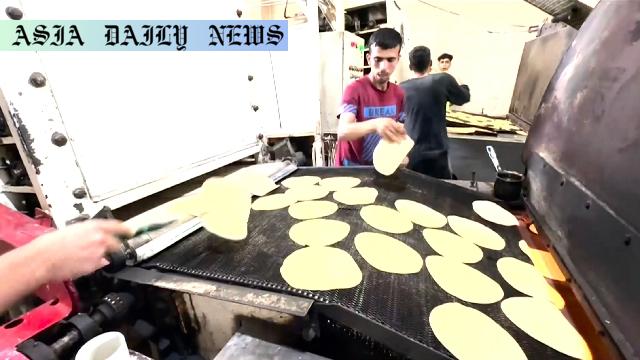Gaza aid delivery: The United Nations World Food Programme reports that bakeries in parts of Gaza have resumed production after aid delivery.
Gaza aid delivery resumes after nearly three-month blockade.
93 humanitarian trucks arrived, providing critical food supplies.
Some bakeries in southern and central Gaza begin operating.
Food shortages caused malnutrition and miscarriages before aid delivery.
WFP plans to continue delivering aid to 2.2 million people reliant on it.

Introduction: Aid Brings Hope to Gaza Amid Crisis
The Gaza Strip has faced extreme hardships for the past two and a half months, with a blockade imposed since March 2 cutting off vital resources. The humanitarian toll has been devastating, with widespread food shortages leading to severe malnutrition and even loss of life. However, as of recent aid deliveries facilitated by the United Nations World Food Programme (WFP), a glimmer of hope has emerged. On Tuesday, a convoy of 93 trucks carrying essential supplies marked a crucial turning point, enabling the reopening of a few bakeries in south and central Gaza.
The Humanitarian Crisis: How the Blockade Intensified Challenges
The blockade’s impact on Gaza’s 2.2 million residents was catastrophic, as food supplies dwindled to critical levels. The situation grew even more dire when reports revealed malnutrition-related deaths and an alarming rise in miscarriages due to a lack of essential nutrition for pregnant women. The blockade, imposed to exert pressure on Hamas, also exacerbated Gaza’s reliance on international aid organizations, which struggled against the restrictions. From families struggling to find daily meals to children suffering from hunger, the humanitarian crisis reached a breaking point.
93 Trucks of Relief: Resumption of Key Infrastructure
On Sunday, Israel announced the lifting of the blockade to allow humanitarian aid into Gaza. The timely arrival of 93 aid trucks on Tuesday carried a mix of food items, medical supplies, and other essential goods. One of the standout factors of this delivery was the revival of key local infrastructure. The WFP provided video evidence of bags of wheat being delivered to several bakeries, which have now resumed operations. For those in south and central Gaza, these freshly-baked breads represent not just sustenance but also a sign of economic and societal revival amidst adversities.
A Start, But Far From Over
While the aid delivery and operational bakeries mark significant progress, WFP officials have emphasized that this is only the beginning. With approximately 2.2 million residents dependent on international aid, much work remains to ensure sustained food security. The WFP reiterated its commitment to sending more supplies and rebuilding Gaza’s ability to meet its population’s needs. However, logistical, political, and security challenges continue to cast uncertainty over the region’s long-term recovery. Many experts believe a collaborative approach involving all stakeholders is essential to prevent further crises.
Conclusion: A Path Forward for Gaza
Gaza’s ongoing humanitarian challenges highlight the importance of continued international intervention and support. The resumption of bakery operations serves as a testament to philanthropic and diplomatic efforts, proving that a small step in the right direction can significantly impact lives. However, without sustained aid flow and a focus on rebuilding lasting infrastructure, these efforts risk being short-lived. The global community must work together to provide the tools necessary for Gaza to stand on its own once again. For now, those first loaves of bread being baked are more than food—they symbolize hope.
Commentary
The Importance of Timely Aid in Crisis
Humanitarian aid is not just a necessity—it’s a lifeline for those trapped in crises like the ongoing one in Gaza. The recent delivery of aid and subsequent reopening of bakeries give us a glimpse of the resilience of human communities, even under dire conditions. The fact that these bakeries were able to resume production so quickly portrays the importance of infrastructure resilience amidst adversity. However, it also underscores the fragility of any society when cut off from essential resources. More aid is necessary to alleviate these conditions and foster sustainable growth.
Collective Responsibility
The international community bears the responsibility to act decisively in the face of these challenges. The crisis in Gaza is a poignant reminder that prolonged conflict and blockades can have devastating humanitarian consequences. If steps are not taken to ease tensions, such blockades risk becoming cyclical, with dire consequences for the innocent civilians caught in their grip. Organizations like the WFP play an extraordinary role under extraordinarily difficult circumstances. But they cannot do it alone. Collective global efforts are needed to fund and support their initiatives, ensuring that aid reaches those who need it the most.
A Holistic Approach to Resolve Root Issues
While humanitarian aid is essential to immediate relief, it is only a short-term solution. Addressing the underlying conflicts and fostering sustainable peace remains an urgent task. Economic development, agricultural projects, and education initiatives could serve as long-term solutions for Gaza’s population. Such measures would not only improve living standards but also reduce reliance on external aid. Until then, the world must remain vigilant in providing the critical resources Gaza requires to emerge from the brink of disaster.


